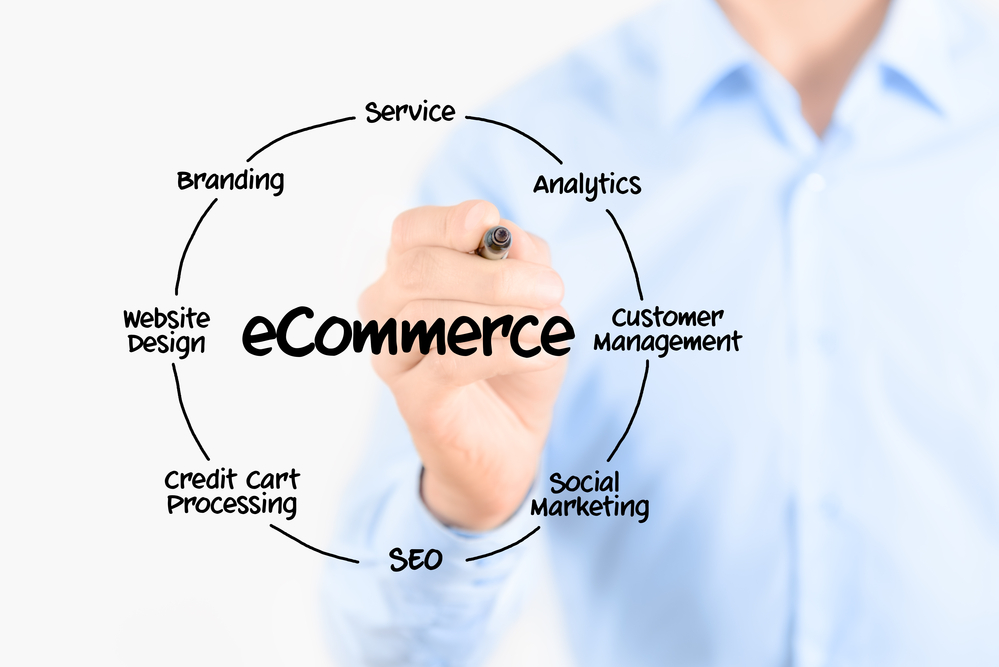
Launching Success: The Essential Blueprint for Starting Your Ecommerce Empire
 Kickstarting a new eCommerce website can be an exciting venture, but it’s one that comes with many steps and considerations. Here’s a comprehensive guide we’ve created from our years of experience working with eCommerce to help you through the process:
Kickstarting a new eCommerce website can be an exciting venture, but it’s one that comes with many steps and considerations. Here’s a comprehensive guide we’ve created from our years of experience working with eCommerce to help you through the process:
1. Market Research and Business Planning
Understanding Your Market: Begin by conducting thorough market research. Identify your target audience, their needs, and how your products or services will meet those needs. Understand your competition, what they offer, and how you can differentiate yourself. You can use third party services like Spyfu or Semrush to do competitor research.
Business Plan: Develop a business plan that outlines your business model, value proposition, revenue streams, and detailed financial projections. This plan will be your roadmap and can be essential for securing any needed funding. Always have an open mind and be prepared to pivot as the need arises.
2. Choosing Products and Vendors
Product Selection: Select products that not only have a market demand but also align with your brand. Consider starting with a narrow focus to establish expertise and expand as you grow. If you are going to be dropshipping be certain to choose dropshippers that are reliable.
Supplier Relations: Establish relationships with reliable suppliers. Whether you’re manufacturing your own products or sourcing from others, building strong relationships with vendors is critical for ensuring quality and consistency.
3. Setting Up Your Website
Choosing a Domain Name: Select a domain name that is short, memorable, and reflects your brand. Ensure it’s easy to spell and avoid hyphens and numbers if possible. You can use a free domain name generator like the one available here to search for and find possible domain names.
eCommerce Platform: Choose an eCommerce platform that suits your business size and budget. Options range from Shopify and WooCommerce to Magento and BigCommerce. Consider scalability, security, and user-friendliness in your decision. Our preference is Shopify as it is easy to setup and use and has everything you need to operate a robust eCommerce store.
Website Design: Your website’s design should be attractive and reflect your brand identity. It should also be user-friendly, with intuitive navigation and clear calls-to-action (CTAs). Most of the major eCommerce setups provide a comprehensive library of free and paid templates you can use to get started quickly.
Mobile Optimization: Ensure that your site is mobile-friendly, as a significant portion of online shopping is done on mobile devices. Generally, most eCommerce services today are mobile-friendly.
4. Payment Processing
Setting Up Payment Gateways: You’ll need to set up payment gateways to accept payments. Popular options include PayPal, Stripe, and Square. Look for solutions that offer secure transactions and are widely accepted by consumers. If you chose a service like Shopify you can use their payment processor and accept payments instantly.
Security: Implement SSL certificates to secure personal and payment information. This not only protects your customers but also boosts your credibility.
5. Legal and Compliance
Business Registration: Register your business according to your local laws. This might include obtaining a business license and registering for taxes.
Privacy Policy and Terms of Service: Have clear privacy policies and terms of service on your website to ensure you’re legally protected and to build trust with your customers.
6. Marketing and SEO
Search Engine Optimization (SEO): Optimize your website for search engines to improve visibility. Use keywords, meta descriptions, and quality content to rank higher on search engine results pages (SERPs).
Content Marketing: Create valuable content that attracts and engages your target audience. Blog posts, videos, and infographics can help establish your brand as a thought leader in your industry.
Social Media and Paid Advertising: Leverage social media to build a community around your brand. Consider using paid advertising on platforms like Google Ads and Facebook to reach a broader audience.
7. Logistics and Fulfillment
Inventory Management: Set up systems for inventory management to keep track of stock levels, orders, returns, and shipping.
Shipping and Handling: Determine your shipping strategy, including which services you’ll use, shipping rates, and how you’ll handle international orders.
8. Customer Service
Support Channels: Establish support channels such as email, phone, or live chat. Be responsive and helpful to build customer loyalty.
Feedback and Reviews: Encourage customers to leave reviews. Actively seek feedback to improve your products and customer service.
9. Analytics and Improvement
Analytics: Use tools like Google Analytics to track website traffic, user behavior, and conversion rates. This data is vital for understanding the effectiveness of your marketing strategies and where you can improve.
Continuous Improvement: Regularly review performance data and customer feedback to continuously refine your website, product offerings, and customer experience.
10. Scaling Your Business
Diversifying Products and Services: As your business grows, consider diversifying your products and services to cater to a broader market. Be careful to not over diversify. Rather than try to be everything for everyone it is often better to specialize and localize your offerings.
Expanding to New Markets: Look for opportunities to expand into new markets, both domestically and internationally.
Automation and Staffing: Implement automation where possible to streamline operations, and hire staff as your business scales to manage increased demand.
Conclusion
Launching an eCommerce website is a multifaceted process that requires careful planning and execution. By following these steps, you can set up a strong foundation for your eCommerce venture. Remember, the key to success is not just in starting but in continuing to adapt and grow with the market trends and customer needs. Regularly evaluate your strategies, stay agile, and keep your customers at the center of your business decisions.
The journey of kickstarting a new eCommerce website involves a mix of strategic planning, technological setup, legal compliance, and marketing prowess. While the above guide provides a broad overview, each step involves deeper layers of complexity and expertise. Success in eCommerce is not achieved overnight but through persistent effort, customer-focused strategies, and an ability to adapt to the ever-changing digital landscape. If you are thinking of starting a new eCommerce business or trying to grow your existing eCommerce business we have years of experience and can help you succeed. Just give us a call at 1-866-622-5710 or visit Adtastic.



